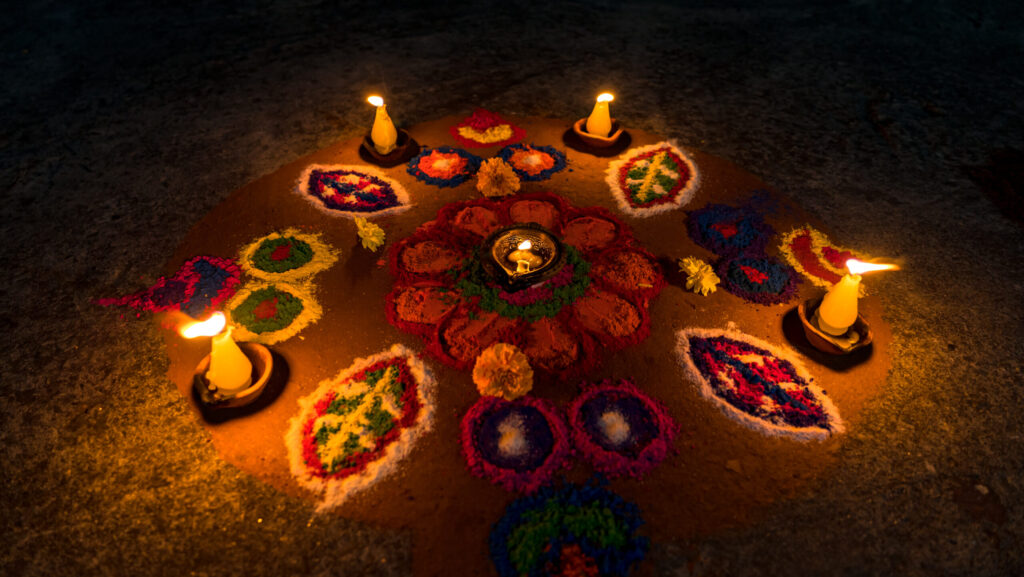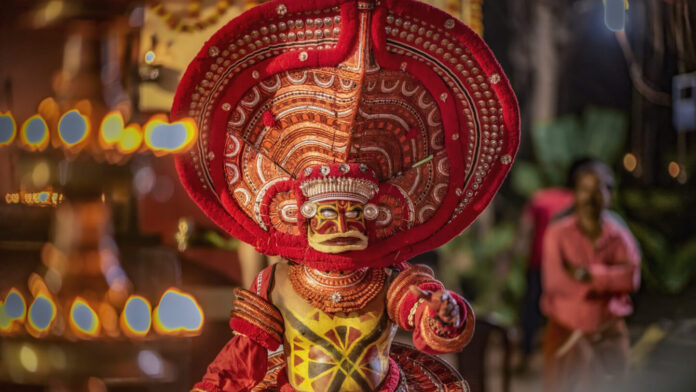By The Frontpage Journal
In the southern coastal villages of Sri Lanka, as twilight descends and the smell of burning incense drifts through the air, a centuries-old performance begins. Figures adorned in vibrant wooden masks and elaborate costumes step into open courtyards. Drums echo. Chanting begins. A world of gods, demons, and village spirits awakens in dance and theatre. This is Kolam, one of Sri Lanka’s oldest and most fascinating folk traditions, where myth, ritual, and performance are woven into a singular cultural expression.
Kolam is more than entertainment. It is a ritual, a satire, a community gathering, and a theatrical ceremony all in one. Passed down through generations, often within families or tight-knit communities, Kolam performances tell stories from ancient Pali and Sinhala texts, local legends, and oral traditions. They feature a mix of mythical characters, village scenes, royal parodies, and spiritual narratives, all expressed through movement, music, and masked personas.
The masks themselves are works of art, hand-carved from light wood and painted in vivid colors to represent gods, demons, animals, and human archetypes. Each mask carries symbolic meaning. The red-faced Raksha represents chaos and fear. The serene Naga symbolizes divine guardianship. Comic characters like the Mudaliyar or the village idiot bring humor and critique into the performance, poking fun at colonial-era bureaucrats or societal hypocrisy. These masks are not merely decorative. When worn, they allow the performer to transcend their own identity and embody a character from Sri Lanka’s rich mythological past.
Kolam’s origins are deeply tied to healing rituals and community well-being. In many rural areas, the performances were held to invoke protection from disease, drive away malevolent spirits, or bless the start of a new season. The dance was thought to appease unseen forces and bring harmony to the village. While some of these beliefs have faded in the modern era, the underlying cultural significance remains intact. Today, Kolam is still performed at temple festivals, village gatherings, and cultural shows, though often in abbreviated forms.

In places like Ambalangoda, the tradition is particularly strong. Families of mask-makers continue to pass down their skills, combining craftsmanship with deep ritual knowledge. The Ariyapala family, for example, has preserved Kolam mask-making for generations, running both a museum and workshop that attract scholars and tourists alike. Here, visitors can witness the delicate carving process and learn the stories behind each face. Foreign travelers often find themselves captivated not only by the masks’ aesthetic appeal but by the living narrative they represent. These aren’t just artifacts. They are emblems of a worldview that sees performance as a form of communication with the sacred and the social.
The challenge today is preserving Kolam in the face of modernity. As rural communities change and digital entertainment dominates, fewer young people are taking up the art form. Yet there are sparks of renewal. Cultural institutions, schools, and dedicated artists are working to document, teach, and reimagine Kolam for new audiences. Contemporary theatre practitioners are incorporating Kolam elements into stage plays, blending the traditional with the experimental. Some designers and filmmakers have even drawn visual inspiration from Kolam masks to create modern interpretations rooted in heritage.
For Sri Lankan audiences, Kolam is a reminder of the island’s unique cultural language, one that combines satire, storytelling, and spirituality in a single performance. For foreign visitors, it offers a glimpse into a world where art is inseparable from ritual and where every dance step carries the weight of history.
Behind every Kolam performance lies an untold story. Stories of a people who used laughter to critique power, rhythm to banish fear, and masks to reveal the truths of human nature. These stories still live, waiting to be heard in the flicker of firelight, the beat of a drum, and the wide, painted eyes of a wooden face staring back through time.




